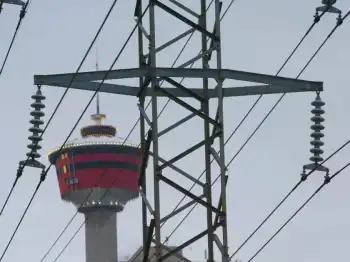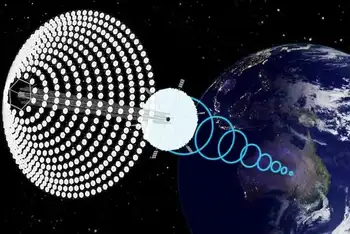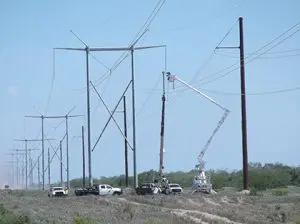Company aims to store energy in air
By Associated Press
CSA Z462 Arc Flash Training - Electrical Safety Essentials
Our customized live online or in‑person group training can be delivered to your staff at your location.

- Live Online
- 6 hours Instructor-led
- Group Training Available
Under a barren patch of Utah desert, a private-equity group is bankrolling the project to hollow out a series of energy-storage vaults from a massive salt deposit a mile underground. It promises to make a perfect repository for storing energy and, in effect, creating a giant subterranean battery.
Energy storage is catching on as a way to make wind and solar power more useful.
Without energy storage, the output of solar and wind power is so erratic — the wind doesn't always blow; cloud cover can shut down solar cells — that utilities can take only so much of it, said Jim Ferland, senior vice president for operations for PNM Resources, the New Mexico utility.
If renewable power makes up too big a part of a utility's energy mix, it can make the delicate act of balancing loads on a power grid difficult. The lack of storage is one of the things holding back clean energy, say scientists for Sandia National Laboratories' energy systems group in Albuquerque, N.M.
"Storage is the key here," said Charlie Hanley, manager of Sandia's photovoltaic and grid integration group. "We have to find a way to overcome intermittent swings from cloud cover."
The only commercial-scale, compressed air power plants are in McIntosh, Ala., and Bremen, Germany. Other projects are under development in Norton, Ohio, and Ankeny, Iowa.
Initially, because of market needs, Salt Lake City-based Magnum Energy LLC will store natural gas for Rocky Mountain producers, taking it from a nearby interstate pipeline, in an "energy hub" near Delta, Utah. It hopes to start dissolving the first cavern within a year.
Later, the company is looking to dig other caverns at the site for compressed air, which could store excess energy generated by a nearby wind farm and then release it later when demand is high to turn turbines and create electricity, and possibly for carbon storage, which could trap a neighboring coal-fired power plant's emissions.
Still other caverns could be devoted to liquid petroleum; yet another pipeline for liquid fuels, passing through the same part of Utah, is close to receiving federal approval.
The company filed for federal approval in December to build its versatile "energy hub."
A futuristic type of energy storage could involve putting the battery capacity of plug-in electric vehicles to work for the electric grid. It could take extra power from vehicles when needed, while ensuring a vehicle is properly charged overnight, said Daniel Laird, a researcher for Sandia's wind energy technology group.
That will work only when plug-in cars make up a big part of the U.S. vehicle fleet, however.
For now, "we've got to find a way to store renewable energy for when people need it," said Steve Michel, a former utility executive who works for Western Resources Advocates, a Boulder, Colo.-based nonprofit law firm.
Other forms of energy storage involve lumbering flywheels or banks of batteries, but they have limited capacities and can be costly.
"In terms of storing bulk energy — lots of megawatt-hours — compressed air is cheaper than anything else out there," said Paul Denholm, lead analyst for energy storage at the U.S. Department of Energy's National Renewable Energy Lab in Boulder, Colo.
In Utah, Magnum snapped up rights to the largest known salt deposit in the American West, a bed one mile thick by several miles wide. It has the advantage of being close to several energy producers; another company is planning a major solar farm in Utah's west desert.
"The physical location of that salt deposit is just tremendously valuable, said Scott Jones, managing director of Houston-based Haddington Energy Partners III, which is backing the project. "It's the only one everybody knows about or has been found. We're excited about it."
Each impermeable cavern will hold the volume of an Empire State Building, said Craig Broussard, another Magnum partner.
That's billions of cubic feet of storage capacity of natural gas, liquid petroleum or compressed air.
The company would take excess energy from wind or solar farms or other energy producers, use it to pump compressed air underground and let it out to generate power during peak-use times.
The system would lose some energy to pumping, and the released air would need to be mixed with some natural gas to power air expansion turbines. Still, "this is far more efficient than a conventional power plant," Broussard said.
"The power industry is like being in an ice-cream business without a refrigerated warehouse," he said. "This kind of storage provides a warehouse of energy."











